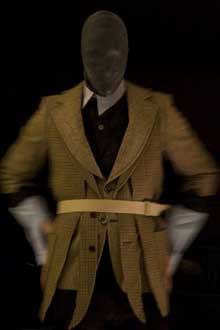 Otto von Busch might very well be the most interesting person i’ve met over the past few months.
Otto von Busch might very well be the most interesting person i’ve met over the past few months.
He is an artist, activist, fashion theorist, designer, a PhD-candidate in critical fashion design at Göteborg University (Sweden)… he is active in so many fields that i’ll just focus on two of his current works. One is self_passage that engages with social and subversive fashion design. >self_passage< takes a critical and political look on design and in particular on the fashion system and its networks. By organizing workshops and distributing booklets, the project tries to demonstrate in a very approachable way how to critically hack and re-formi the operating system of modernity and the industrial modes of production.
He is also collaborating with Evren Uzer, an Istanbul-based urban planner and a PhD candidate, on roomservices, a series of practical research projects that explore urban and rural issues and transgress the borders between urbanity, social reorganization, design co-location, applied socio-geography and social art work. With the roomservices projects they experiment with ‘tools’ for providing a different viewpoint or just celebrating the differences in everyday life by revealing their varied shades under new light.
How does one become a fashion renegade?
I call the marginal actors in the fashion field “fashion renegades� since they often use unconventional strategies in the subversive or “subconstructive� techniques in relation to fashion. They use techniques similar to hacking from my point of view. Modifying and breaking into systems to alter them, injecting micropolitical will into the channels and flows of the system. But they do not oppose the inherent power or code processing of that system. This is what makes hackers similar to heretics; they oppose the hierarchical role of the interpreter, administrator, or author, but not the power itself – code or faith. The heretic is not an atheist, but someone hacking the institutional and hierarchical interpretation of the faith. Like the hacker, modder, or tinkerer the heretic is keeping the power on, not renouncing or opposing the core or energy of a system. Using faith for liberation and empowerment.
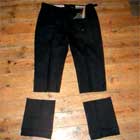

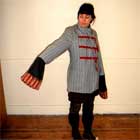 >self_passage< Italyan Avlusu in Istanbul
>self_passage< Italyan Avlusu in Istanbul
This approach can also be taken in fashion. Not boycotting fashion or scorn it as “the emperors new clothes�, but instead celebrating the magic and desire flowing through that system, reconnecting it to empower instead of regarding it as an enslaving culture. So being a fashion renegade is more about an approach than a specific training or skill.
You’re developing the self_passage fashion projects. The Dale Sko hack workshop, for example, made fashion designers work together with local shoe workers on the design of shoes. How did they manage to collaborate together? How was the exchange? Which influence did each one have on the other?
The Dale Sko hack was a project trying to get designers to not only engage in the forming of products but also in the software of industrial production. The designers were collaborating with the producers and workers to explore how machinery could be “misused� and skills be used differently, going beyond a fordist linear mass-production mode, to use more of the potential of the manual steps in production. It is absurd that we still operate fashion production in a way where a designer gives a technical drawing to a factory and say, “produce 10.000 exact copies of this�. In this mode we just see manual labor as a step in production waiting to be replaced by machines. Instead we must find ways to use the existing manual craft skills better in the design, find non-linear ways to operate production that creates more interesting results and narratives. This was the core of the shoe hack and it worked out very well. The designers explored various ways to distribute the design tasks as well as engage more in how production processes can change the designs underway. The results have been shown at several or the big fashion events and also the Dale shoe factory is reforming their production now.
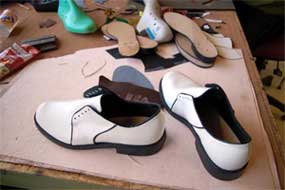
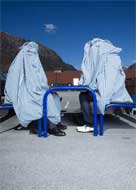 In the Dale Sko Hack book (downloadable as a PDF), you refer to William Morris and the Art & Craft movement. Which similarities did the Dale experience have with the A&C movement? And where are the dissimilarities?
In the Dale Sko Hack book (downloadable as a PDF), you refer to William Morris and the Art & Craft movement. Which similarities did the Dale experience have with the A&C movement? And where are the dissimilarities?
The A & C movement was similar in a way of cherishing the work of the hand and also engage in the craft skills of the workers. But as I see it the main difference is that the A &C still was very elitist in the way that the designer was still the creative “god� at the top of the pyramid and the craftsmen realizing the dream image of his genius mind. The shoe hack is operating inside mass production, inside a linear factory but trying to renegotiate the interfaces between design and production. In the compilation phase of design so to say. Between the writing of code (by the designer) and execution of code (in the factory). As such the shoe hack is about exploring the protocols of design practice.
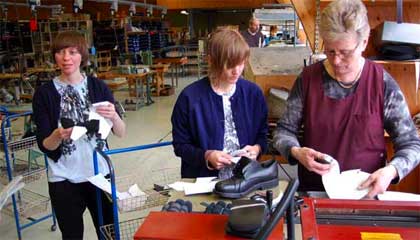 What are the potentials of hands-on hacking experiments like the one you organized in Dale Sko? What can they teach us? How can they inspire new modes of production?
What are the potentials of hands-on hacking experiments like the one you organized in Dale Sko? What can they teach us? How can they inspire new modes of production?
I think the great potential is to look differently on the interface between design and production. This can open new action spaces for design with more participation and deeper engagement and thus rethink parts of how we perceive mass-production. Hopefully it can also revalue what we have left of industrial production in the post-welfare state. By emphasizing the local distribution of also the design process we might find specific qualities in local production.
The first results of the Dale Sko workshop appeared on the catwalk of the London Fashion Week in Fall 2006. What was the feedback of the press and of the audience?
Dale Sko factory has appeared on the fashion map. Not as an anonymous production facility but as an experimental platform for new shoe design. The project has got quite some press and also the designers have now continued to work with Dale Sko for their new collections. That is very good feedback for a first time experiment like this.
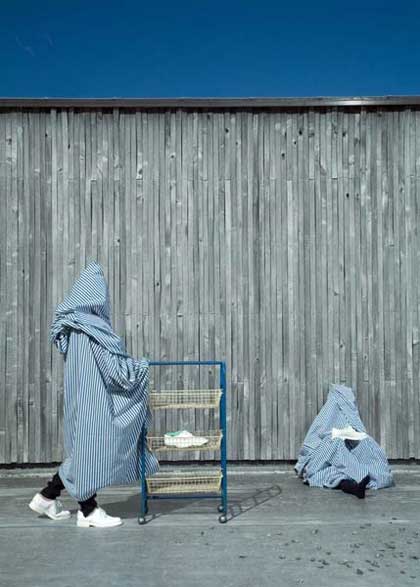 I’d like you to tell me more about the “roomservices” urban interventions. The booklet Adventures in Local Knowledge Production (download it as PDF) presents the “low-level networks of pro-ams, prosumers, producers and other co-creators.” Could you explain us briefly who are these people? How important is their contribution of Pro-Ams to cultural, economic and social life or even to research?
I’d like you to tell me more about the “roomservices” urban interventions. The booklet Adventures in Local Knowledge Production (download it as PDF) presents the “low-level networks of pro-ams, prosumers, producers and other co-creators.” Could you explain us briefly who are these people? How important is their contribution of Pro-Ams to cultural, economic and social life or even to research?
roomservices is run by my partner Evren Uzer and me and in the Adventures in Local Knowledge Production we mapped the low level knowledge production in Innsbruck, Austria. We focused on all small actors not appearing in the yellow pages or entrepreneurial maps, but instead engage in very lose and informal networks. People and places of huge creative potential but that do not appear in our current organization of society. These are serious hobbyists and professional amateurs. We created a simple classifying system for understanding how they operate in the city, connect to each other and to other systems, focusing on three aspects of actors in the low-level networks; archetypes, hubs and channels. Traditionally these are poets, discussion circles, small bands, hobby modders, rehearsal studios, squats, pirate radios etc.
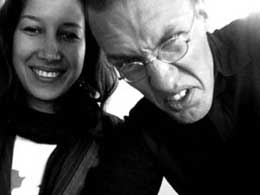
There has lately been a lot of talk about “creative industries� but it will be a serious mistake to consider these activities as industries or even production facilities. We instead tried to see them as co-creators as at this level much is very collaborative and society still struggles to get a grip on what this really is. This level of society is not fitting to our entrepreneurial models but we need to rethink our economic operating system in many ways if we want this low-level to blossom and be the ground for a “new economy�. The copyright and music sharing debates we see now is only the tip of the iceberg of this change we think.
It is also important to state that it is not a question of including all spare time activities into economic systems or transactions. Hobbies and recreation must still be a free zone for play, relaxation and leisure too. The question is if we can find ways to survive of our pro-am interests and not see all work as necessarily alienating.
Which conditions ensure that a lively network of pro-ams can thrive?
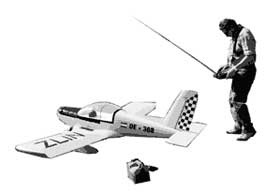 Our purpose was not so much to look at the fertilizers of pro-ams or “creative industries and creative class� as in the works of Richard Florida for example. Evren and I tried to find way to map the so far unexplored correlations between these networks and actors. But the sharing and spreading of new ideas is central, not only through the Internet, but socially. Various platforms, amplifiers and scenes are central for the sharing of knowledge at this level and this is actually something that can be supported beyond the “recreation� or “hobby� level it is perceived as today.
Our purpose was not so much to look at the fertilizers of pro-ams or “creative industries and creative class� as in the works of Richard Florida for example. Evren and I tried to find way to map the so far unexplored correlations between these networks and actors. But the sharing and spreading of new ideas is central, not only through the Internet, but socially. Various platforms, amplifiers and scenes are central for the sharing of knowledge at this level and this is actually something that can be supported beyond the “recreation� or “hobby� level it is perceived as today.
But understanding this level of society is only in its cradle. We have spent centuries optimizing industrialism and institutional capitalism and we still lack models and maps for the low-level knowledge production.
How can an expertise raised on non-profit and democratic principles meet with capitalistic modes of production?
Well this is something that we need time to understand and experiment with and social entrepreneurship, activist business, and anti-preneurship are just a first wave of experiments. Perhaps we need to once again look seriously at local currencies and other means for exchange that can operate on levels where global capitalism does not fit. We need more tools to see how this works, it is apparent that there is no longer ONE public and ONE market but multitudes of publics, markets, levels and networks in society, and most probably we need several models to see them all. Not one theory will explain it. Not one ring will rule them all.
Any upcoming projects you could share with us?
Selfpassage has a new collection out, a cookbook to inspire and help you re-sew your old garments into new ones. This autumn I will work with an exhibition in Istanbul on “Hackers and Haute Couture Heretics� exploring the interfaces between high fashion and the fashion hackers and craftivist.
Evren and I will hold a summer course on social entrepreneurship and small change methodologies. We will also arrange a workshop on the connection between rural and urban modes to organize creative endeavors.
Everything we do is published in PDF-format and in copyleft so get inspired and co-create – keep updated on the selfpassage and roomservices sites!
Thanks Otto!
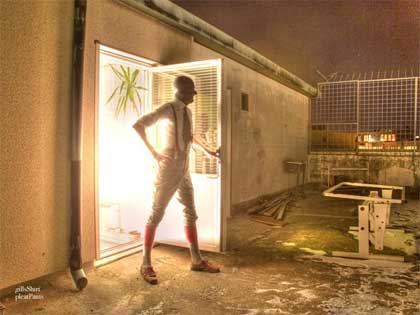
Additional note: Otto has recently published a new book together with Karl Palmås: Abstract Hacktivism: the making of a hacker culture (available at Amazon or you can download it for free in PDF format.)
Photos of the Dale Sko Hack: Bent Rene Synnevåg.
